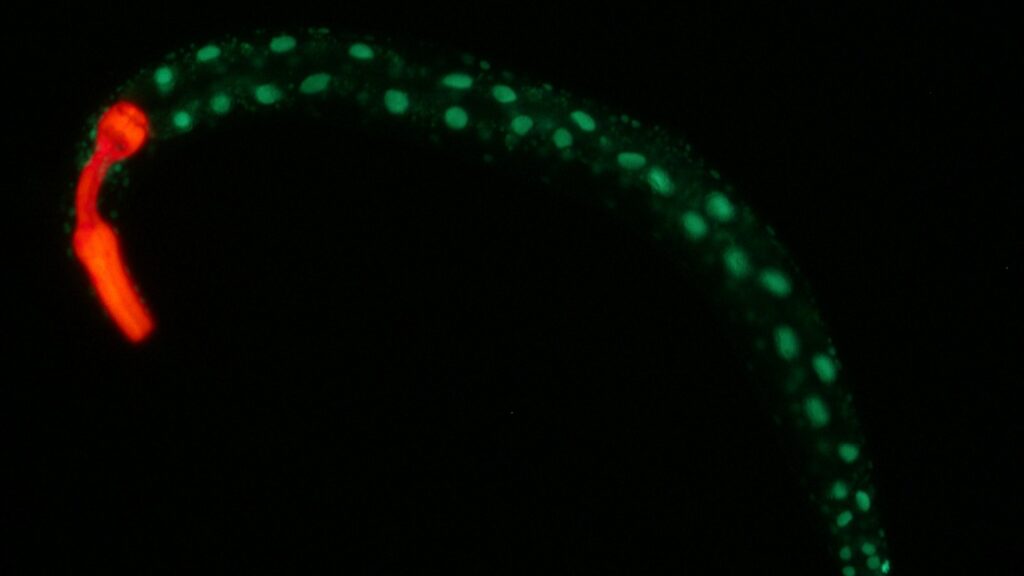C. elegans is a nematode that measures millimetre of length, approximately. It has been used to study the genetics of development and the nervous system, and in recent years is making contributions to the study of aging, cell death and genome structure. In 1998 it has been published the complete sequence of its genome, comprising some twenty thousand genes, a number similar to humans.
C. elegans facility is founded with the purpose of facilitating experimentation in this nematode for researchers with no specialization in the model ant for those who already know it but do not have the infrastructure or the expertise to carry out some techniques such as
GMO generation. The service is located on the third floor of the Duran i Reynals Hospital, and is run by Julian Ceron and Alberto Villanueva. The coordinator of the platform is Montserrat Porta.
Currently, the animal has a major impact on biomedical research. In fact, in recent years, two Nobel laureates in Physiology andMedicine have been awarded to researchers who have conducted their research with this nematode. Its short life cycle and the conservation of genes and signaling pathways involved in human diseases make this worm a very attractive model for in vivo validation.
C. elegans has several features that make it particularly suitable for the research: it is transparent, which facilitates microscopic observation; it is a hermaphrodite animal, which favours genetic studies; it is a simple organism with a nervous system and digestive well-defined and a small number of cells; it is easy to maintain in the laboratory; it has a short life, two to three weeks, allowing results in a short time, and it is relatively easy to disrupt the function of its genes by RNA interference (RNAi).

